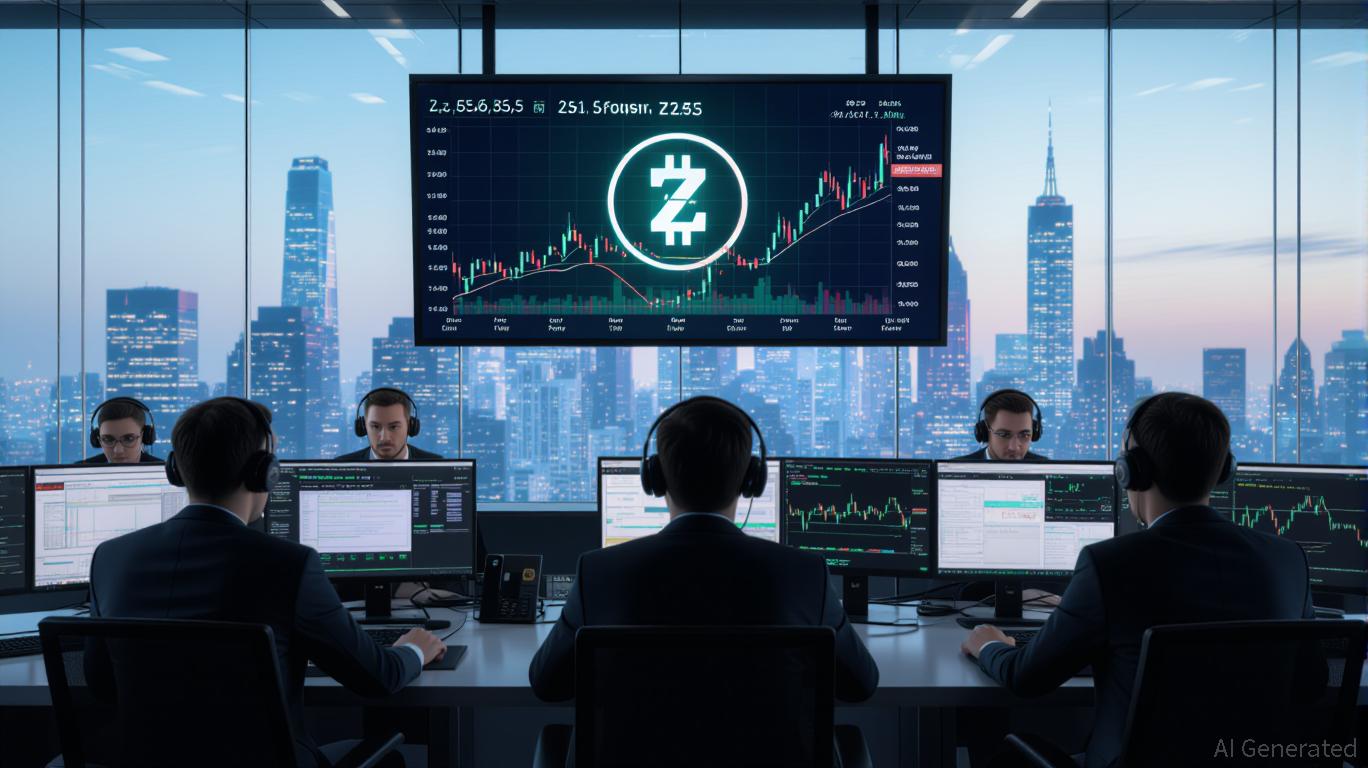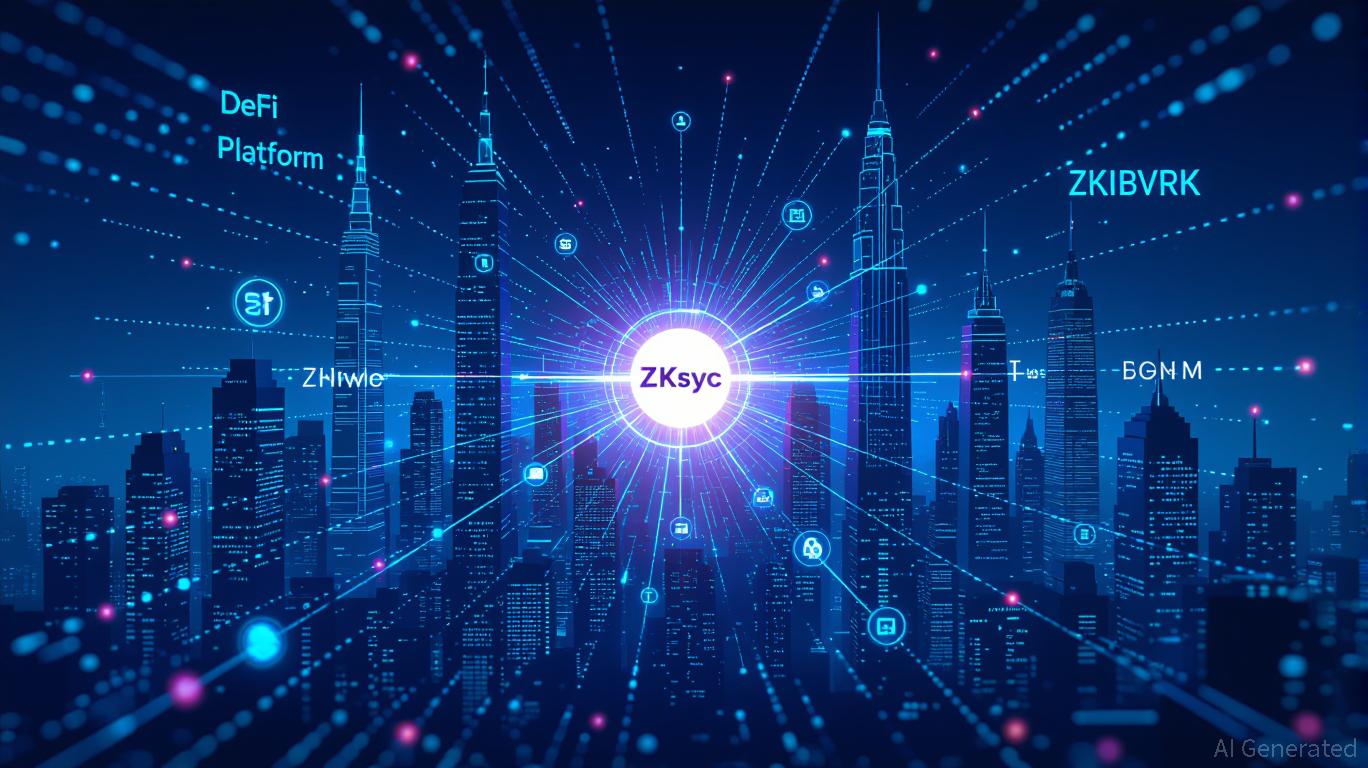Zcash Halving and Its Effects on Cryptocurrency Value: The Role of Limited Supply and Shifts in Investor Actions After Halving
- Zcash's 2024 halving reduced block rewards by 50%, tightening its deflationary supply model to 4% annual inflation by 2025. - Transition to proof-of-stake (PoS) lowered energy costs and attracted institutional investors, stabilizing network security. - ZEC surged 92% post-halving in 2025, driven by scarcity narratives, regulatory clarity, and Trump-era crypto optimism . - 2028's next halving will further cut rewards to 0.78125 ZEC, potentially accelerating price growth amid evolving crypto adoption. - Sc
Scarcity as a Catalyst for Value
Zcash’s halving events follow a set schedule, with the first on November 18, 2020, and the second on November 23, 2024, according to a
The effects of the 2024 halving on ZEC’s price were seen quickly. By the close of 2025, ZEC had climbed 92% in value, driven by several factors: clearer regulations, increased institutional involvement, and a bullish market atmosphere following Donald Trump’s return to the presidency, according to a

Mining Economics and Network Viability
The 2024 halving immediately impacted Zcash miners. With rewards per block cut in half, PoW miners saw their earnings decrease, raising questions about the sustainability of mining in an increasingly competitive and eco-conscious sector, as stated in a
Even with these changes, the halving’s deflationary effect remains complex. While limiting new supply can boost prices, it also brings up concerns about short-term network security. Smaller rewards may push out less competitive miners, potentially concentrating power among larger players. Yet, Zcash’s PoS system has addressed this by making validation more accessible, helping the network stay robust even as block rewards shrink, as noted in a
Investor Behavior and the Road Ahead
The 2024 halving has also influenced how both individual and institutional investors behave. Scarcity events often spark FOMO (fear of missing out), and Zcash’s deflationary path has intensified this reaction. According to a
Looking forward, the next Zcash halving in late 2028 will cut block rewards to 0.78125 ZEC, further restricting supply and possibly driving prices higher, as projected in a
Conclusion
The 2024 Zcash halving highlights the ongoing importance of scarcity in shaping cryptocurrency values. By cutting new supply and shifting to a more sustainable consensus approach, Zcash has managed the challenges of post-halving economics while benefiting from positive market trends. For investors, the main lesson is that scarcity, when combined with favorable macroeconomic conditions, can drive both short-term price swings and long-term growth. As the 2028 halving approaches, Zcash’s development serves as an insightful example of how protocol design, investor psychology, and market dynamics interact in the crypto world.
Disclaimer: The content of this article solely reflects the author's opinion and does not represent the platform in any capacity. This article is not intended to serve as a reference for making investment decisions.
You may also like
The Rapid Rise of ZK Technology and Its Impact on the Cryptocurrency Market
- Zero-knowledge (ZK) technologies are reshaping blockchain infrastructure, enabling scalable, secure solutions for institutional adoption. - Partnerships like Mantle-Anchorage Digital and Deutsche Bank's Ethereum Layer 2 initiatives highlight ZK's role in bridging TradFi and DeFi compliance needs. - ZKsync's 43,000 TPS and StarkNet's $72M TVL growth demonstrate technological breakthroughs, with analysts projecting 60.7% CAGR to $90B by 2031. - Institutional validation from JPMorgan and venture funding for

Stablecoins Drive Fed Policy Shift: Miran Calls for Bold 50 bps Rate Reduction
- Fed Governor Miran advocates 50-basis-point rate cut, citing stablecoin growth's potential to lower borrowing costs by 0.4 percentage points. - Policy divide emerges as officials like Jefferson caution rates remain "restrictive," while Musalem supports further easing for labor market insurance. - Market prices 63% chance of 25-basis-point December cut, but Miran's impending departure heightens urgency for finalizing 2025 policy trajectory.

ZK Atlas Enhancement: Transforming DeFi with Zero-Knowledge Powered Scalability
- ZKsync's October 2025 Atlas Upgrade introduces modular Layer 2/3 infrastructure, achieving 15,000 TPS and slashing proving costs via RISC-V-based Airbender prover. - The upgrade enables zero-fee DeFi transactions and real-time asset tokenization, with ZK token surging 50% and $19M in institutional funding for integration. - By unlocking RWA tokenization and addressing trust gaps through ZKP protocols, ZK infrastructure is redefining DeFi scalability while navigating regulatory and integration challenges.

Bitcoin Updates: Overcoming the $112K Barrier—How Global Trends and Institutional Players Intersect
- Bitcoin faces critical $112K threshold amid U.S. government shutdown-induced liquidity crunch, pushing Treasury General Account above $1 trillion. - Institutional demand wanes as BlackRock's BTC ETF inflows drop 90%, while Cathie Wood cuts 2030 price forecast by $300K due to stablecoin competition. - On-chain data reveals weak buying pressure below $100K support, though technical indicators suggest potential rebound if shutdown resolves. - Ledger plans New York IPO amid $2.17B crypto hack losses, while B
